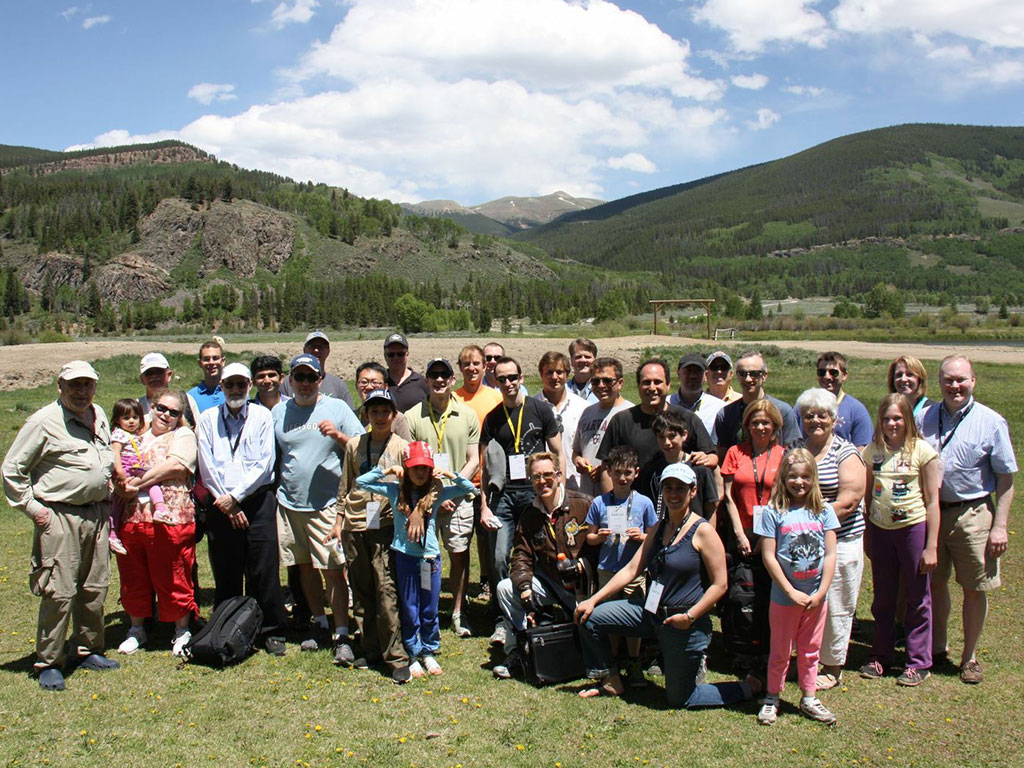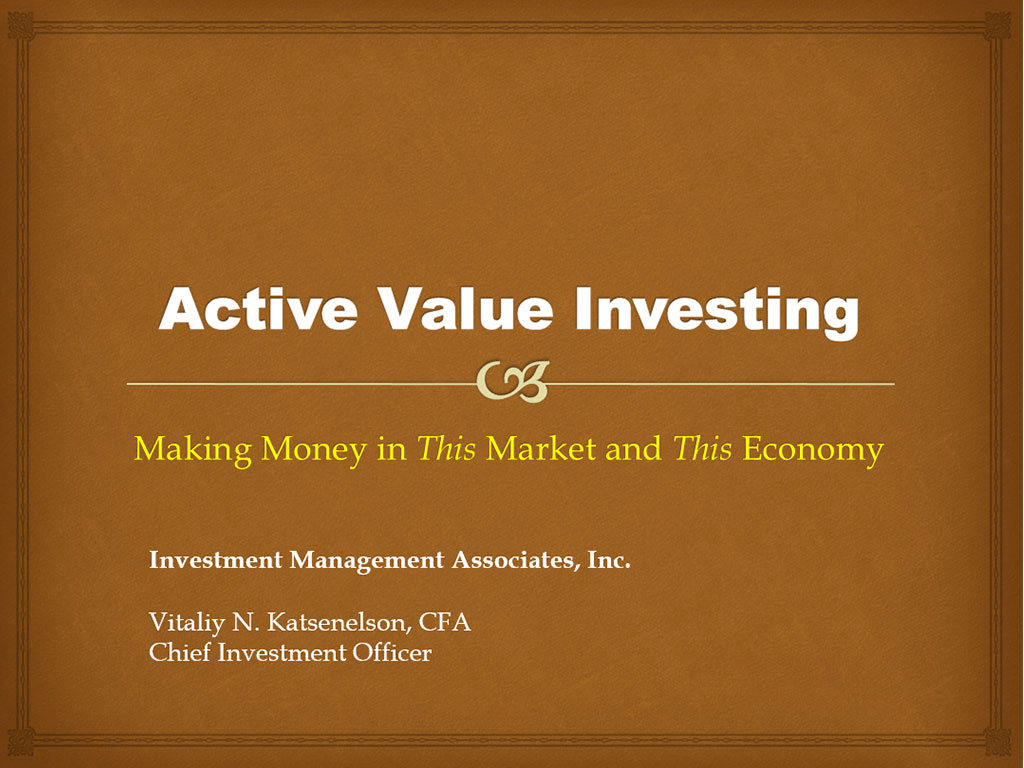VALUEx Vail 2011 is over. I already miss these three days. I got the idea to put together VALUEx Vail after I attended VALUEx in Klosters (a little ski resort town in Switzerland, located on the other – the “value” – side of the mountain from Davos) in February this year. Since I live only two hours away from a magnificent (and much improved) replica of Switzerland – Vail – choosing the location for the conference was a no-brainer. At the core of VALUEx is that there are no star speakers, and all the content (i.e. presentations) of the conference are participant-generated.
Here are pictures from the conference.
Once I started to download my thoughts from the conference onto paper, I couldn’t stop, and my writeup got to be eight pages long. I’ll break it up into two emails.
Every day (Wednesday through Friday) we met at 5 pm at a different restaurant, where for two hours we listened to six 15-minute presentations, with 5- to 10-minute discussions following each. From 7 to 8 pm we had dinner, and from 8 till the restaurants kicked us out (usually around 10) we had a “dessert lecturer” and a lively discussion. All of us would gather around and the “dessert lecturer” would discuss a topic and answer questions. I’ve attended a lot of conferences, and I’ve learned that the goal is not to get an “actionable” investment idea, but to be stimulated by new thinking and the rethinking of old ideas.
This is how Paul Brophy, one of the participants, described this conference:
“I think I was expecting something more like the standard get together that focuses on everyone providing an idea or two. Instead, it was just as you said, a place where smart, interesting people talk about markets, politics, families, and yes, a stock pick or two over breakfast, late-night drinks, and waiting for the next zip line ride.”
The first day’s lecturer was Sizhao Yang (he goes by Zao). Zao is not a traditional value investor, in fact he openly admits that he is still learning about value investing; it is more like a hobby for him. However, in his non-hobby time he started the company that created Farmville, one of the popular games on Facebook, with over hundred million users, which he later sold to Zynga. Given his experience, I asked Zao to speak about social networks. I tremendously underestimated the breadth of Zao’s knowledge, which extends far beyond social networks. His granular understanding of technology companies was breathtaking. Here are some thoughts from Zao’s talk. Most are his, and some are mine, triggered by our discussion.
Groupon will be facing an uphill fight in its business, not just from Google but more importantly from Facebook. A majority of Groupon customers came from Groupon’s advertisements on Facebook – the Facebook users. Now Facebook, which has much more granular information about its users (e.g., location, education, likes/dislikes, etc.), will be going after Groupon’s customers.
Groupon may also have another problem: the user experience is poor because Groupon is “too successful” at bringing new clients to the merchants. This business model suffers from the “be careful what you wish for” curse. Merchants are overwhelmed with the new demand and thus the quality of service declines. My wife bought a service on Groupon that requires six appointments. She went once and was told she had to wait three months until the next appointment because, thanks to Groupon, the service provider was overbooked. It seems that my family will not be using Groupon or that service provider again.
Zao mentioned that bargain-hunting customers often don’t turn into repeat customers, and therefore, though the cost of acquisition of the customer may not be high, the total value of the customer (purchases over lifetime) is low.
Facebook and gaming. Most people access Facebook during work. Social games (e.g. Farmville) are predominantly played by women. These games lend themselves perfectly to the Facebook (play at work) environment, because you need to “check” on them a few times a day – unlike traditional games they don’t require continuous, uninterrupted play and you don’t need to install 10-gigabyte, graphic-intensive software on your employer’s computer. For the above-mentioned reasons, social networking games (like Farmville) don’t usually compete with the likes of World of Warcraft or Call of Duty, which are predominantly played by men.
“Something else”. This brings up a very interesting point. In the past the impact of the internet on “analog” businesses such as newspapers was fairly symmetric. For instance, newspaper classified sections were losing customers to Monster.com, Craigslist.org, etc. The average user spends 30-plus minutes a day on Facebook – that is the time they don’t do something else. So the first casualty of Facebook (the “something else”) has been daytime soap operas. It is very possible that viewership had been on the decline for a while, but women spending more time on Facebook was likely the last nail in the soap opera coffin. As investors, we need to be aware of asymmetrical threats that are posed by technological innovation.
About asymmetric threats. I’ve been noodling lately on whether the internet distractive force will spill beyond music and book retailers. Today’s smart phones allow you to scan a barcode instantly at a store and in an instant get the comparative prices of local and online retailers. While shopping for a projector for the conference at Micro Center, a local retailer, using RedLaser, a free app on iPhone, I found that Best Buy online (which will deliver to the store for free) had it $50 cheaper. All I had to do was show the screen of my iPhone to the sales clerk and the price was matched.
Best Buy stock looks statistically cheap, trading at about 10x earnings; but I keep wondering if its business model will need to change dramatically to adjust to the disruptive properties of instant comparison shopping, which puts it head to head with online-only retailers.
Gamestop is another stock I have watched from afar. It seems only logical that in the future more and more PC and console games will be downloaded, not bought on DVDs. Therefore, no DVDs to buy, no games to trade, and no reason to visit the store.
Some companies have done a good job adjusting to disruptive technologies; Netflix has done a great job, Blockbuster not so much. Or think how brilliant Jeff Bezos of Amazon was willing to undercut their core book business by coming out with Kindle. It comes down to management and their willingness to disrupt their current (profitable) business for the future but not yet profitable opportunity.
DNA. When Zao talked about technology companies he emphasized the importance of corporate DNA, which is usually implanted by the company’s founders. The more creative and more dynamic is the business, the more important DNA becomes.
Research in Motion (RIMM) has engineering DNA, and it has done a great job making highly sophisticated, very secure smart-phones for the business market. Apple has design DNA and thus has created terrific iPhones for the consumer market. However, the smart smart-phone market is converging towards the consumer side. Business people want to use the same cell phone for business and pleasure, and the design – an easy-to-use (iPhone-like) interface – becomes very important. In fact I see many of my friends who work for large companies carrying both Blackberries and iPhones, or dropping their Blackberries altogether in favor of iPhones (I guess their employers find that the iPhone is secure enough).
Does that mean a firm with engineering DNA cannot create good consumer products, or vice versa? No, but you want to handicap probability of success, because a DNA mismatch makes it an uphill battle. Come to think of it, this explains Cisco’s blunder in consumer products, because selling to consumers is not part of its DNA.
Zip lining. On the second day of VALUEx Vail, on Thursday, we took our significant and insignificant others to the beautiful, Colorado-picturesque 4 Eagle Ranch. Some family members relaxed at the ranch, while the rest went zip lining. My kids (Jonah, 10; Hannah, 5) expressed a keen interest in zip lining, and to my great surprise my wife did not object. To my even greater surprise my 78-year-old father decided to join us. So a dozen VALUEx’ers and my family went zip lining. My kids loved it, and so did I. I normally have a mild fear of heights, but for some reason when you fly several hundred feet in the air on the zip line you don’t get have time to be afraid of heights! Afterwards we all had lunch at the ranch. Next year we’ll have to kick up it up a notch and go whitewater rafting.
Later in the day Jim Chanos made a presentation, explaining why he is short for-profit education companies, and he was our dessert lecturer as well. Jim is the Warren Buffett of short selling; he runs the largest ($7 billion) short-sale-only fund in the world. When you see Jim on CNBC he comes off as this very negative person – after all, he is a short seller – and in his interviews he usually explains why he believes certain stocks will decline in price, talks about corporate fraud, or why a certain Asian country may have some big problems, etc. However, in person Jim is anything but negative.
When he talked about for-profit colleges, I kept thinking how, despite being a symbol of capitalism, for-profit colleges are anything but. There are few incentives for them to care about the quality of education, job placement, or affordability, not to mention the default rates that follow when students are overburdened with loans in the hundreds of thousands of dollars. As of right now their business is broken – their business model cannot exist without government subsidy, which provides 80% of the loans. The government backstops the losses from the loans students take out to attend these institutions.
I am a believer in capitalism and the free market, but government involvement in loan guarantees turns this industry into asymmetric capitalism: Gains are harvested by for for-profit education companies – their earnings have gone up over the last decade as if Google were their middle name; however, losses from the government-backed loans, which are in the billions, are socialized (absorbed) by taxpayers.
Jim commented that if the for-profit colleges are so proud of their service, they should underwrite the loan losses, not the taxpayers. I asked Jim which for-profit colleges he was short. He answered, “Let’s just say we are not short DeVry and Strayer; they provide more technical training.” (I read Strayer’s annual report a month ago, and I liked the CEO’s letter to shareholders. It was not just another “puff” piece.)
China. In his “dessert lecture,” Jim laid out his case for believing that China is in the midst of a bubble of enormous proportions, and answered questions. He often gets criticized for never having been to China. His response is that you did not need to live in Miami to know there was a bubble in Miami real estate. I don’t blame him for not visiting China. It could be a bit scary to be arrested for jaywalking in a country that cares little about the rule of law but does care deeply about its image. Suddenly, jaywalking might become a capital offense.
In fact, a few years ago, before my trip to Russia, I was going to publish a fairly negative article about Mr. Putin. I wrote the article but did not publish it. Why tempt the fates? There is a 99% chance that nothing would have happened, but why take the 1% chance with a fairly nasty negative outcome? This is also the reason why I too will not visit China for a long, long time. However, while Jim has never visited China personally, his team has been there several times. After their last visit he told me he was not bearish enough about China. (I’ll share my new thoughts on China later).
Value traps. I broke my presentation into two parts: on the first day I talked about Rules of Engagement Investing, and on the second day I discussed our recent investment in the UK auto parts and bicycle retailer Halfords (I’ll share my presentation and Halfords’s write up in next email). In my first presentation I talked about the two main causes of permanent loss of capital:
a) Earnings power is permanently impaired (e.g., goes from $5 per share to $1). Suddenly the $50 stock is not trading at a P/E of 10, but 50 – also known as a value trap.
b) The P/E collapses. The stock was purchased at such a high multiple (P/E) that it will take a long, long time for earnings to offset multiple compression (e.g. Cisco in the late ’90s). Also known as a growth trap.
To my surprise, Jim noted that he finds disproportionately more ideas in the value-trap than in the growth-trap basket. During the dotcom era he did not short dotcoms but was short Lucent, for instance, which was cooking its books and favored the unsustainable business model of lending to customers to buy its routers, when they had little means to pay for them – ever.
After the VALUEx Klosters conference I appreciated even more the importance of international investing (you see this in the letter we wrote to our clients last quarter; I’ll include it in the next email). This conference made me think a lot about value traps, which are basically hell for investors.
Friday. On Friday we decided not to tempt the mountain gods, and opted for a less dangerous event: we took the gondola to the top of the mountain, where we had lunch. Though at first it was sunny, as soon as we stopped eating (it was almost like the weather was waiting for us) it started to rain and snow. But I don’t think anybody minded (in Colorado fashion it only lasted half an hour or so), and we took some great pictures.
Presentations. We had a lot of other excellent presentations; here is just a sample: Josh Tarasoff discussed the importance of pricing power, not just the ability to raise prices with inflation, but to raise prices above the inflation level (think of it as a hidden asset).
Jake Rosser made a compelling case for Oshkosh. Dan Amoss presented a long (Endeavour Intl.) and a short (The Pantry) idea. Barry Pasikov made a strong case for Telular. Dante Albertini, who travelled all the way from Peru, in his “Bottom Fishing in Cyclicals” presentation discussed Cemex.
Brian Bosse, our token Canadian participant and a great guy, discussed shale gas and fracking. Brian’s presentation made me think that I’d like to own service companies in that space. At my request, Dan Anglin, who runs a fund of funds, discussed his manager selection process.
I know my opinions about the conference are ridden with bias, so discount what I say by 50%. It was an amazing, fun, learning experience. Vail in summer is an underdiscovered treasure. It is beautiful, peaceful, and very European-like (without the Greek debt crisis and everything priced in dollars); even the policemen pretend they are in Europe, driving Volvo SUVs. Cristy Reid, our Director of Operations at IMA, who played event coordinator, did a great job selecting restaurants and hotels, and making the whole conference a flawless experience. Investing is a solitary vocation, but it doesn’t have to be a boring one. Learning with and from each other while enjoying good food and drink and outdoor fun with people who speak your (value) language is a very fulfilling endeavor.
Yes, there will be VALUEx Vail 2012. June 13-15th , 2012. Mark your calendar.










0 comments